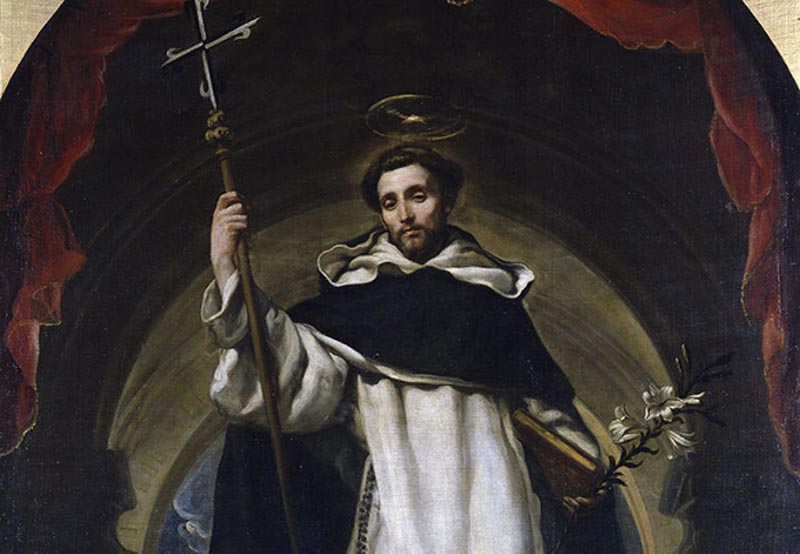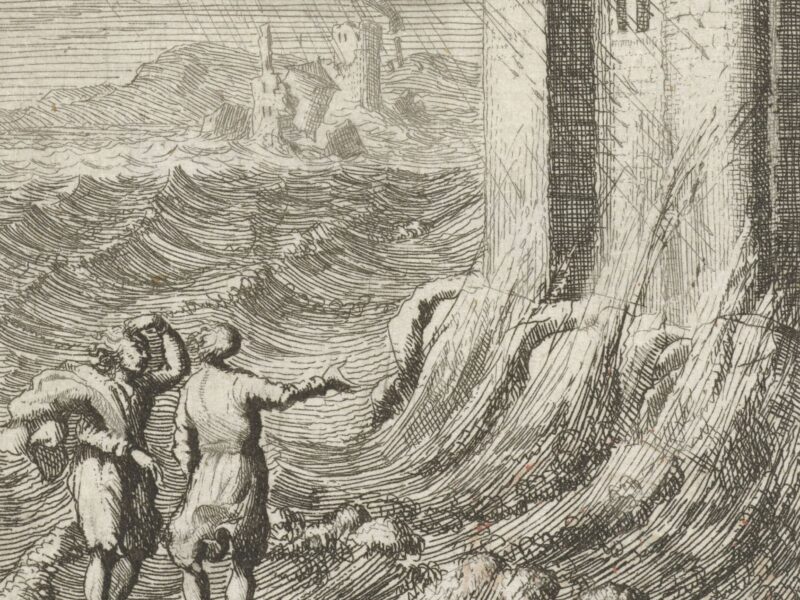
Great Dominicans: St. Dominic
 Some saints can be easily depicted by their charismatic eccentricity, their wonderful skills, or by their influential works, which have been included thereafter in the tradition of the Church. Unfortunately this is not the case with St. Dominic.
Some saints can be easily depicted by their charismatic eccentricity, their wonderful skills, or by their influential works, which have been included thereafter in the tradition of the Church. Unfortunately this is not the case with St. Dominic.
St Dominic left no major written works apart from a few short letters. As Simon Tugwell OP says, “if he ended up as the father of an entirely new kind of religious order, the Order of Preachers, it was not because he deliberately set himself to fashion something new but because, step by step, he yielded himself faithfully and with the utmost generosity to the mysterious dictates of providence”. That’s why if we want to meet him, we will have to see what others have said about him, and what other members of his Order have done. And perhaps in the end we will be able to reread the life of St. Dominic in the light of those who have manifested in their lives the Dominican charism.
If I may, I will still try to highlight some episodes of the life of St. Dominic, which may help us to understand his charism and what he bequeathed to us and the wider Church.
Born in Caleruega in Spain in 1170s, he grew up in this small village with his family. Later his brother Mames will join the Order of Preacher as well. He was sent to the University of Palencia in order to receive education for a clerical career that his parents decided for him. It was said that Dominic was “indefatigable at study”. For him, the preaching of the true faith was to be found in profound and continual study. Then he became a canon regular of Osma, in the cathedral of his diocese. Towards the end of 1203, his bishop, Diego, was sent by the King of Spain to the North of Europe in order to negotiate a marriage, taking Dominic with him.
The journey made a deep impression on Dominic and Diego. Dominic had the heart of an apostle and was particularly concerned by the salvation of all who were separated from God by sin or unbelief. One night in 1203 Dominic and Diego broke their journey in Toulouse. Dominic discovered that their landlord was a heretic, so he sat up all the night with him, resulting in his conversion to the faith. The situation of the Catholic Church in that part of the South of France was not good. A Manichean sect–the Cathars–which took material things to be inherently opposed to the true God, had developed. Dominic was not to know that he was going to spend ten years campaigning against this heresy in the South of France.
Dominic knew that circumstances could teach us something. He had to concede in that particular circumstance that the Word of God supported the heretics in connecting preaching with radical poverty. That’s why Dominic adopted the apostolic life of itinerant mendicancy. Likewise, the heretics had the advantage of running houses for ‘women perfects’, which functioned like orthodox monasteries. Diego and Dominic decided to establish a Catholic monastery to meet their need. It could provide a home for converted women, and give the preachers a useful base.
A long campaign of preaching was needed. Diego and Dominic managed to find people and to depute them to the mission. Some companions had gathered round them and, after the death of Diego in 1207, they stayed with Dominic, giving birth to what would become the Order of Preachers. This intuition of Dominic was to remain in medio ecclesiae. His love of the Church and his dedication to Her oneness in his preaching have been noted by his successors. Dominic was indeed concerned to obtain from the papacy the recognition of the Order. This happened eventually thanks to a bull issued on 22 December 1216 by Honorius III. We celebrate this year the 800th anniversary of the Order of Preachers.
On his deathbed, Dominic promised his brethren that he would be more useful to them after death than he had ever been in life. Dominic died on 6 August 1221, and bequeathed to his brethren the Order and the community life to remain faithful to the task of preaching.


